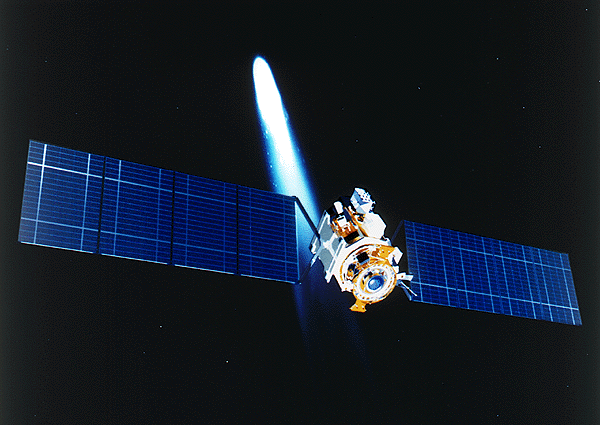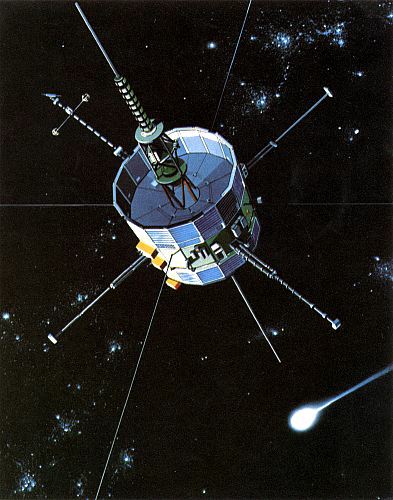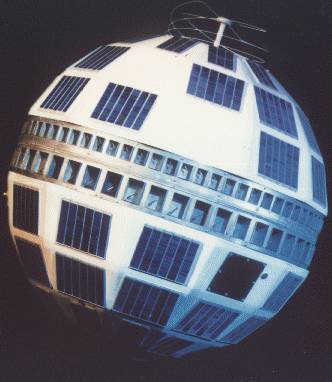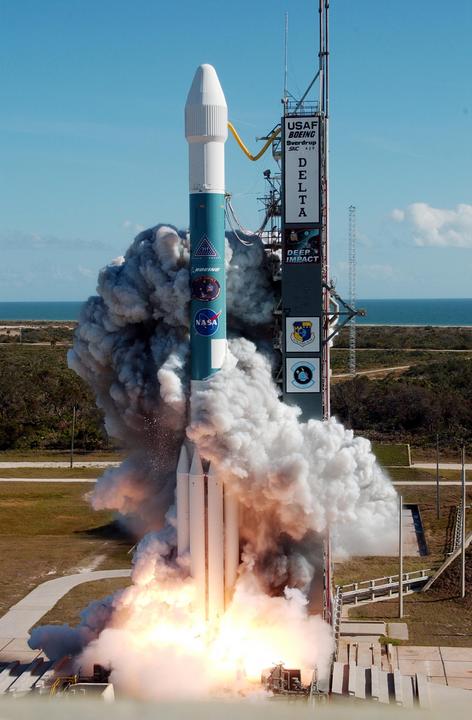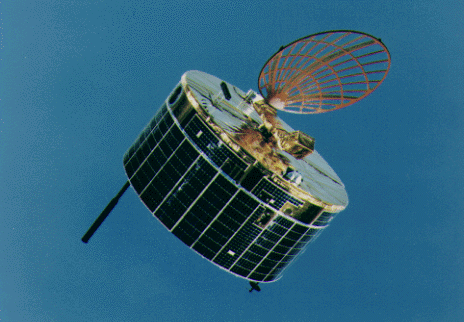Fifteen years ago today — July 23, 1995 — Comet Hale-Bopp was discovered nearly simultaneously by Alan Hale and Tom Bopp.

(Comet Hale-Bopp and the Bodie Island Lighthouse, Nags Head, NC. Photographed by Drew Wilson on March 22, 1997. Image from the JPL Comet Hale-Bopp gallery. Requested permission.)
The two astronomers were making independent observations and each discovered the comet while it was still beyond the orbit of Jupiter, making it “the farthest comet ever discovered by amateurs.”
When it made its closest approach to Earth in March 1997, Comet Hale-Bopp was one of the brightest comets seen in the 20th Century. (We saw it from the front yard of our house in Colorado Springs.)
Hale, by his own account both a professional and an amateur astronomer,* described the discovery in September 1995:
On the night of July 22-23 — the first clear night here in a week and a half — I had planned to observe two comets. I finished with the first one — Periodic Comet Clark — shortly before midnight, and had about an hour and a half to wait before the second one — Periodic Comet d’Arrest — rose high enough in the east to get a good look at. I decided to pass the time by observing some deep-sky objects in Sagittarius, and when I turned my telescope (a Meade DS-16) to M70, I immediately noticed a fuzzy object in the field that hadn’t been there when I had looked at M70 two weeks earlier. After verifying that I was indeed looking at M70, and not one of the many other globular clusters in that part of the sky, I checked the various deep-sky catalogues, then ran the comet-identification program at the IAU Central Bureau’s computer in Cambridge, Massachusetts. I sent an email to … the Central Bureau at that time informing them of a possible comet; later, when I had verified that the object had moved against the background stars, I sent them an additional email. I continued to follow the comet for a total of about 3 hours, until it set behind trees in the southwest, and then was able to email a detailed report, complete with two positions.
While Hale was observing the comet from his New Mexico location, Bopp also saw the comet from just south of Phoenix, Arizona. When the International Astronomical Union announced the discovery of the new comet, it carried both men’s names.
Hale’s blog hasn’t been updated in awhile, but it’s available here as part of the Cosmic Diary.
[BREAK, BREAK]
Comet Hale-Bopp, of course, is also remembered as the catalyst for the multiple suicides of members of the “Heaven’s Gate” cult. I prefer to give its discovery a more prominent place than that later unfortunate episode.
___
*And not the Skipper on Gilligan’s Island.



 by
by 
